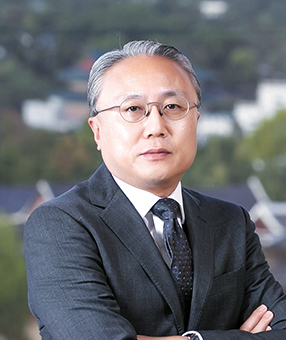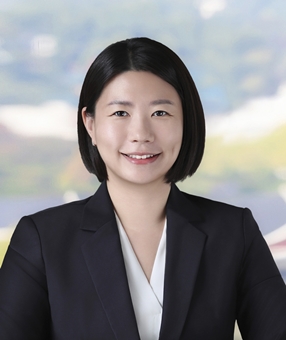Election Results and Upcoming Schedule
In the 21st presidential election held on June 3, 2025, Lee Jae-myung of the Democratic Party of Korea garnered 49.42% of the vote, Kim Moon-Soo of the People Power Party received 41.15%, and Lee Jun-Seok of the Reform Party received 8.34%.
President-elect Lee commenced his five-year term as the 21st president of the Republic of Korea simultaneously with the confirmation of his election by the National Election Commission on June 4. Under ordinary circumstances, the president-elect forms a presidential transition committee before officially starting the term to prepare for the launch of the new administration. However, as this election was held following the impeachment of former President Yoon Suk-Yeol, Lee’s presidential term started immediately upon confirmation of his election.
Going forward, President Lee is expected to appoint key officials, including the Prime Minister and Chief of Staff, and to establish and operate a National Policy Planning Advisory Committee (tentative name) to handle restructuring of government organizations, selection of cabinet members, and setting national policy agendas. Meanwhile, the National Assembly is expected to convene special hearings to vet cabinet nominees and proceed with other necessary steps such as enacting amendments to the Government Organization Act to enable the formation of the new administration.
Background of President Lee Jae-myung
Growing up in poverty, young Lee Jae-myung spent his childhood working in various factories after elementary school. These early experiences as a factory worker are said to have heavily influenced his later roles as a human rights lawyer and politician. He passed the high school equivalency exam and graduated from Chung-Ang University’s College of Law, passed the bar exam in 1986, and practiced law primarily in Seongnam, Gyeonggi Province.
Lee was elected Mayor of Seongnam in the 2010 local elections and was re-elected in 2014. While serving as mayor, he ran in the Democratic Party’s primary for the 19th presidential election in 2017, but did not win the nomination; in 2018, he was elected Governor of Gyeonggi Province.
Lee then ran as the Democratic Party of Korea’s candidate in the 20th presidential election held on March 9, 2022, competing against former President Yoon Suk-Yeol of the People Power Party, but was narrowly defeated. Later, in the June 2022 by-election, he was elected as a member of the 21st National Assembly, and in August, became the leader of the Democratic Party of Korea. He was re-elected as a member of the 22nd National Assembly in April 2024. Most recently, following the impeachment of former President Yoon, Lee was elected as the 21st president of Korea in the resulting presidential election.
Anticipated Key Policy Directions
Considerable political, economic, and social uncertainty engulfed Korea over past six months in part as a result of former President Yoon’s emergency martial law declaration and subsequent impeachment. With the inauguration of the new administration, much of this uncertainty is expected to alleviate, and stability will likely return quickly. In particular, as the ruling Democratic Party of Korea holds a majority in the National Assembly (171 out of 300 seats), the new administration will likely have sufficient stability and momentum to push through its agenda with the National Assembly’s cooperation.
President Lee has been advocating “pragmatic progressivism” and is generally assessed as taking a realistic approach. In the presidential race, he articulated visions such as making Korea a “Top 3 AI nation,” achieving a “3% potential growth rate,” and becoming a “Top 5 global power.” He highlighted “sustainable growth”—improving growth potential through structural reform and innovation rather than artificial stimulus or imitation—and “inclusive growth,” in which all citizens participate in and benefit from innovation and value creation, rather than growth benefiting only a few. This vision is expected to be further detailed in the process of establishing the new government’s policy agenda.
Based on his campaign pledges and speeches, President Lee’s roadmap for the maritime and shipping industries is anchored on two key pillars: (i) accelerating the green transition of the industries, and (ii) opening new market frontiers.
At the heart of this agenda are three major initiatives:
|
(i) |
Responding to the International Maritime Organization(“IMO”)’s environmental regulations for decarbonisation and scaling up supports for providing ship financing arrangements to Korean shipowners who are planning for constructing green ships; |
|
(ii) |
Establishing RE100 offshore wind clusters and a high-voltage direct current (“HVDC”) power grid; and |
|
(iii) |
Transforming the city of Busan into a global maritime and shipping hub - by positioning the city as a strategic base for developing the Polar Northern Sea Route (“PNSR”), revitalizing Busan Port, and relocating the Ministry of Oceans and Fisheries to Busan from Sejong City. |
|
1. |
Responding to Global Environmental Regulations and Supporting Decarbonisation Movements, including Green Ship Construction Projects |
|
2. |
Pushing Towards Carbon Neutrality - Establishing RE100 Offshore Wind Clusters and HVDC Power Grid |
|
3. |
Transforming City of Busan into a Global Maritime and Shipping Hub |
Related Topics






